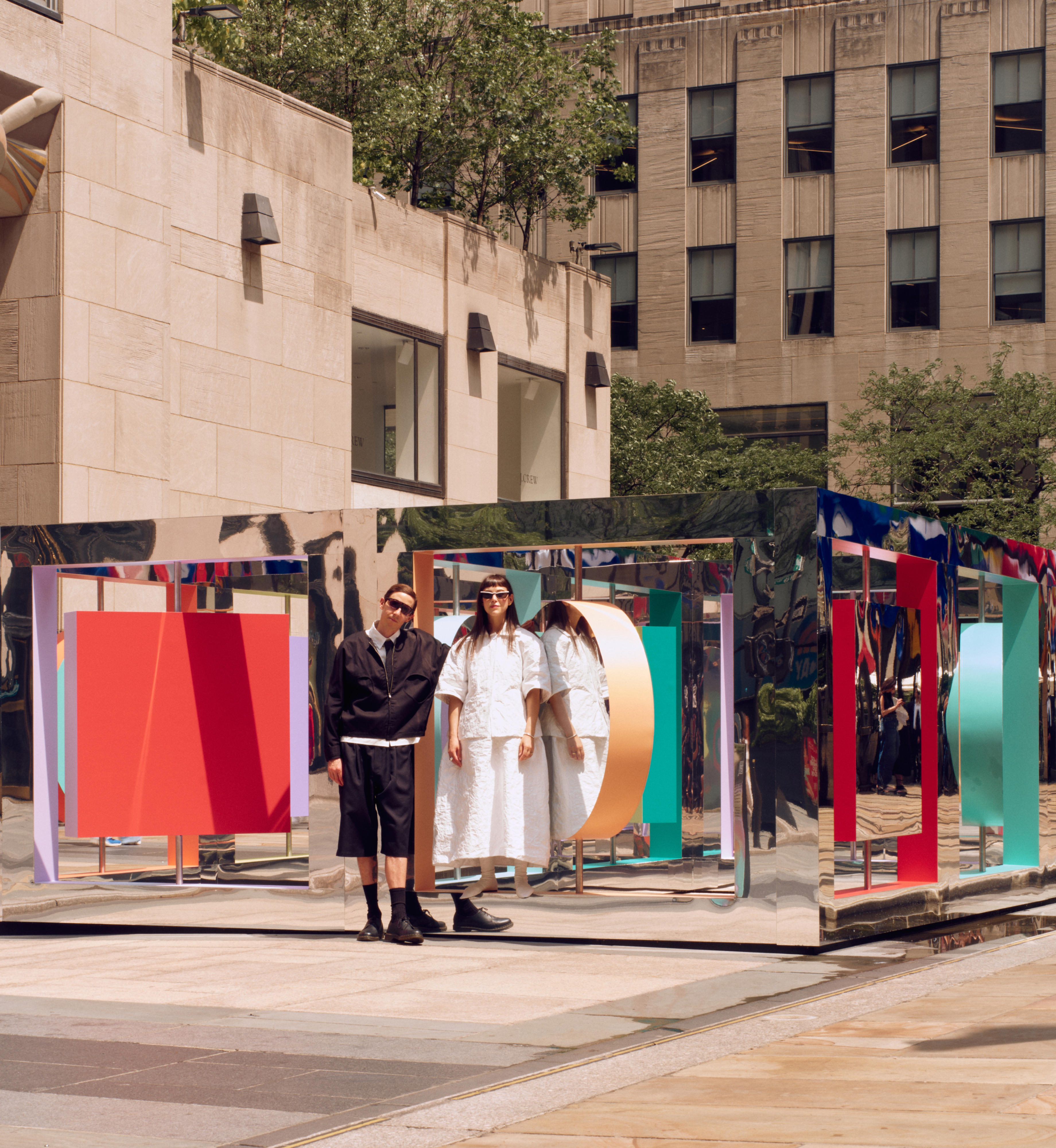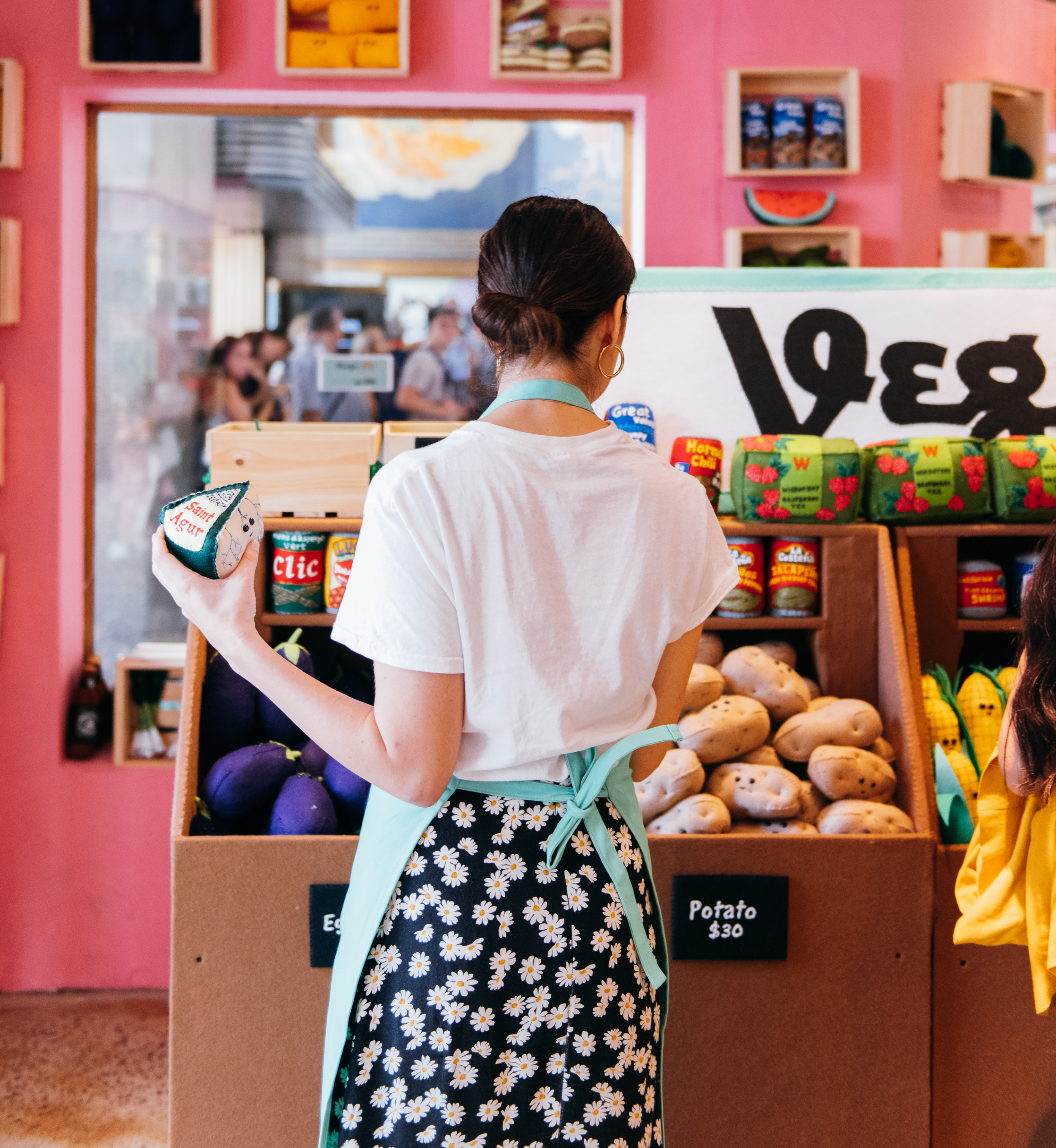
How AI Helped Design Wade and Leta’s ‘Reflection Point,’ an Interactive Maze in Front of 30 Rock

A Look Back at the First 25 Years of Art Production Fund at Rockefeller Center
Inside The Weather Room, the Cocktail Bar with the Best Views of NYC
A Broadway Star Raised at the Rainbow Room: Counting Down to the Tony Awards With Klay and Kara Young
What to Do in New York City in June
The First-ever Eataly Caffè Opens at Rockefeller Center — Here’s a Look Inside
Photo by Collin Hughes
Rockefeller Center is inviting visitors to get playful this summer. With brightly-colored circular and square swivel pieces that are interspersed with mirrors, the newest public art piece, Reflection Point, lures visitors to slow down and step inside, and find their own creative pathway.
“It’s a sculptural maze built with mirrors to imply and direct people to have a moment of reflection, both in a literal and metaphysical sense,” artist Wade Jeffree, half of the Brooklyn-based team behind the project, Wade and Leta, tells The Center Magazine. “You're going into a space where color can infuse you with some form of joy or emotion, and contrasting that with mirrors that show how we see ourselves, and also how we interact with others.”
Sitting in front of the entrance to 30 Rockefeller on Center Plaza, the 29-foot-by-17-foot-by-7.5-foot structure is divided into four quadrants — referred to as portals — each lined with the spinnable shapes. One side is doused in a cheerful hue of peach, lavender, teal, cherry red, or lime green, but give a little spin and the mirror reveals itself, reminding you that you’re part of the art, too.
“With all of the work that we make, we invite people to be a part of it,” Leta Sobierajski explains. “Despite it being this very pristine, shiny thing, we think that the space should be utilized. We don't think that the work is complete until people are actually using it.”
Putting the piece into the world has certainly been a satisfying experience for the duo. “We get to see how the youngest kids to the older adults have different viewpoints on how to approach it,” Jeffree says. “Sometimes kids see color, and there’s no stopping them, but other times it’s the adults. That’s what makes our job really great and fun.”
There’s no right-or-wrong way to interact with the piece, which is made of mirrored aluminum composite panels, plywood, stainless steel, vinyl, and rubber, and was built by Renz + Oei. In fact, the artists themselves have been fascinated by how visitors have been approaching their work. Some have been hesitant to engage until they see others take the lead, while kids tend to just dive in.
“Honestly, children are really the best barometer for these things, because not only do they have this unfiltered sort of play perspective, but they have a really great way of seeing opportunities for play that we may not necessarily see, even when we're creating the piece,” Sobierajski says.
Despite Reflection Point’s creative simplicity, the project was the result of a powerful high-tech tool, as Wade and Leta worked in collaboration with Google Labs’ new AI tool, Whisk, to brainstorm and ideate.
“Using AI for us was kind of like adding a third person to our studio,” Sobierajski says of using the program as a conversion tool. They put text prompts into Whisk, sometimes as specific as saying the art would be part of Rockefeller Center, and the tool would generate imagery. “We were essentially using this tool as our sketching method, and we have countless iterations of these ideas, so it was very helpful for a quick visualization. As long as you're using it with a discerning eye, it’s great for artists with small teams who may not have time to visualize every single idea.”
“With Whisk, our main goal was to simplify image creation by enabling users to leverage images as AI prompts, rather than relying on extensive text. The exploratory and playful nature of Reflection Point exemplifies how innovative tools like Whisk can empower artists to broaden their creative horizons,” says Jamie Barrar, senior program manager, Google Labs.
It was Whisk that inspired the idea of using mirrors, a medium the artists hadn’t worked with before. “Once we thought about that, it really united these ideas of reflection from a literal sense, but also for us personally since the name Reflection Point is the cataloging of us, understanding our place within New York,” Jeffree says.
That said, of course, technology can’t replace artists, especially when it comes to predicting human behavior. “I don’t think any AI tool would be able to think about how we use spaces or the things that come from left field, like the child hanging off the sculpture,” he says. “It is always important to have that human touch.”
As New Yorkers, the artists are especially proud to have their art on display in such an iconic location. “We've been saying that there's not many people in the world that don't know where or what Rockefeller Center is,” Jeffree says.
On top of being impressed with Rockefeller Center’s sculptural components and unwavering history, they’re especially enamoured that their piece is on display just across the street from Isamu Noguchi’s works, considering him one of their heroes. “We're so proud and still in a bit of disbelief that our art is actually there,” Sobierajski says. “It's a place we've known our whole lives!”
Now, they’re making their own mark on their hometown and hope to leave their own sense of connection with visitors, describing their own Wade and Leta style of art as “music to your eyes” with the aim of delighting human senses.
“We're always trying to make work that is participatory, but it's also for people of all ages and all backgrounds,” Jeffree says. “Even though you're in one of New York's busiest areas, you're able to have an experience with art that you never thought you would.”
Wade and Leta’s Reflection Point, displayed on Center Plaza through July 20, is free and open to the public.
The Center Newsletter
Receive important seasonal news and updates, learn about store openings, and get special offers.
















